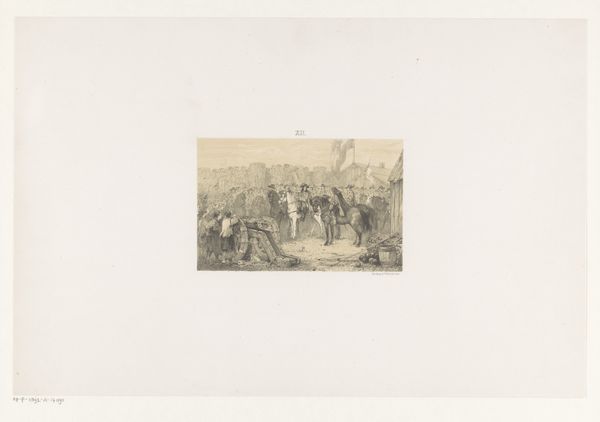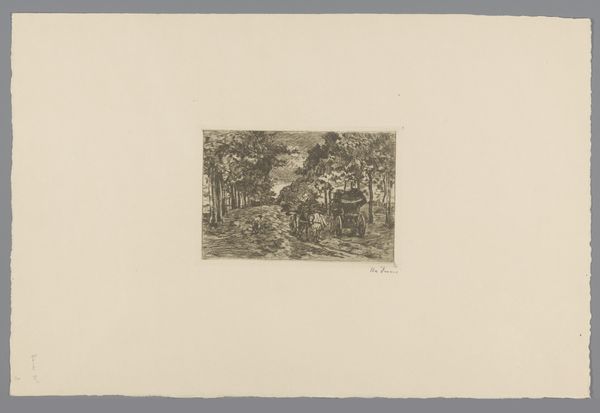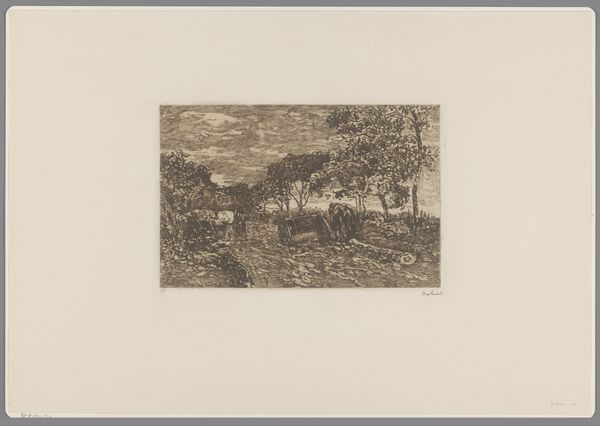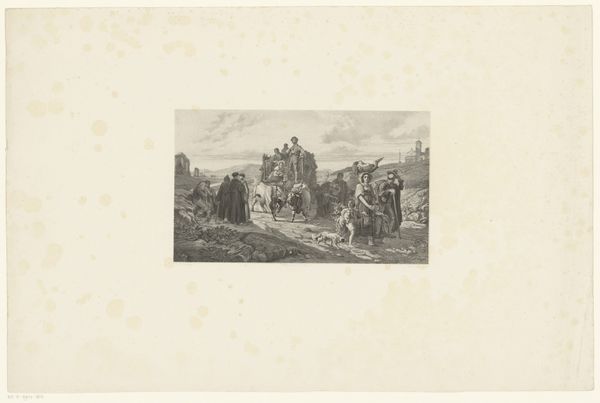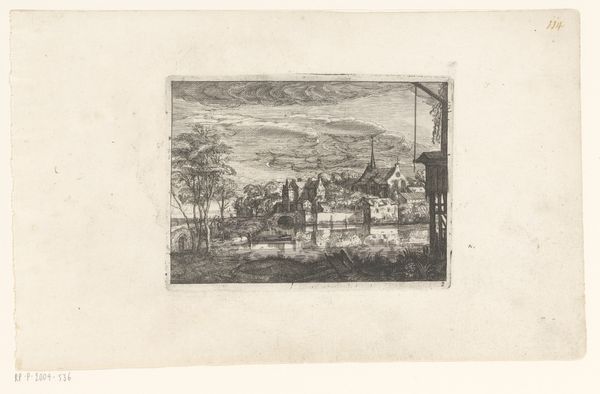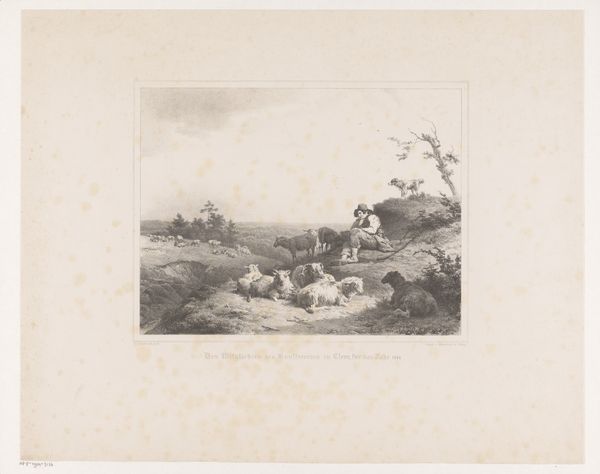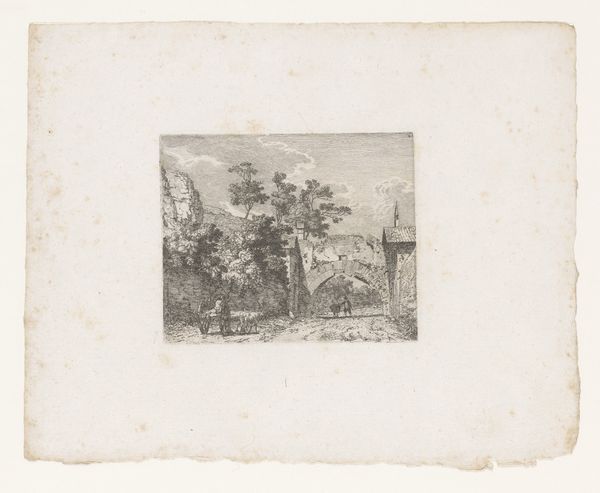
Dimensions: height 188 mm, width 248 mm
Copyright: Rijks Museum: Open Domain
Editor: Here we have "Boerenwoning," an etching by Willem de Zwart, created around 1898-1899. It feels incredibly detailed for an etching, capturing the texture of the building and foliage. What can you tell us about it? Curator: Looking at this work, I immediately think about the labor involved in its creation and what it signifies. Consider the copper plate used for the etching: its source, the process of creating the image in reverse through painstaking work with acid. And look at the subject: not a grand estate, but a vernacular structure. How does this choice of subject matter – a simple farmhouse – democratize art, pulling away from depictions of the wealthy elite? Editor: That’s a perspective I hadn't considered. How does the technique itself reflect those social implications? Curator: Well, etching, unlike painting, allowed for multiple reproductions. Think about the access this afforded. Was it making art more readily available to a wider audience, challenging established power structures that tied art to the wealthy and elite? Or was it more about finding a new market among a rising middle class? What do you think about the notion of printmaking and its possible relation to modern industrial processes and accessibility in that era? Editor: It’s fascinating to consider the parallel between industrial production and the replication allowed by etching. It does open up so much to discuss: accessibility, changing class structures... Thanks for widening my perspective! Curator: And I appreciate your observations about the artwork's detail. Thinking about the means of production adds so much depth.
Comments
No comments
Be the first to comment and join the conversation on the ultimate creative platform.


